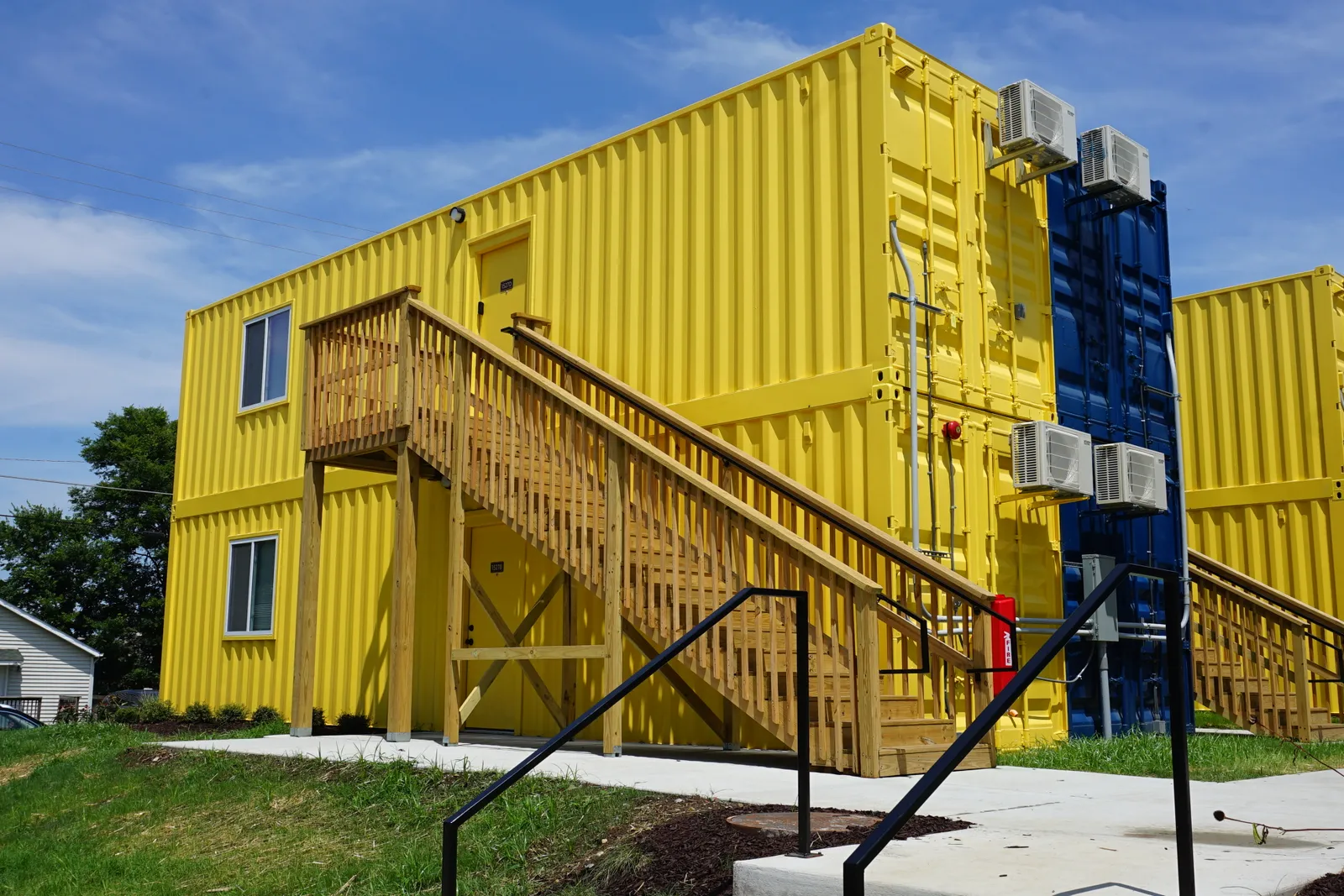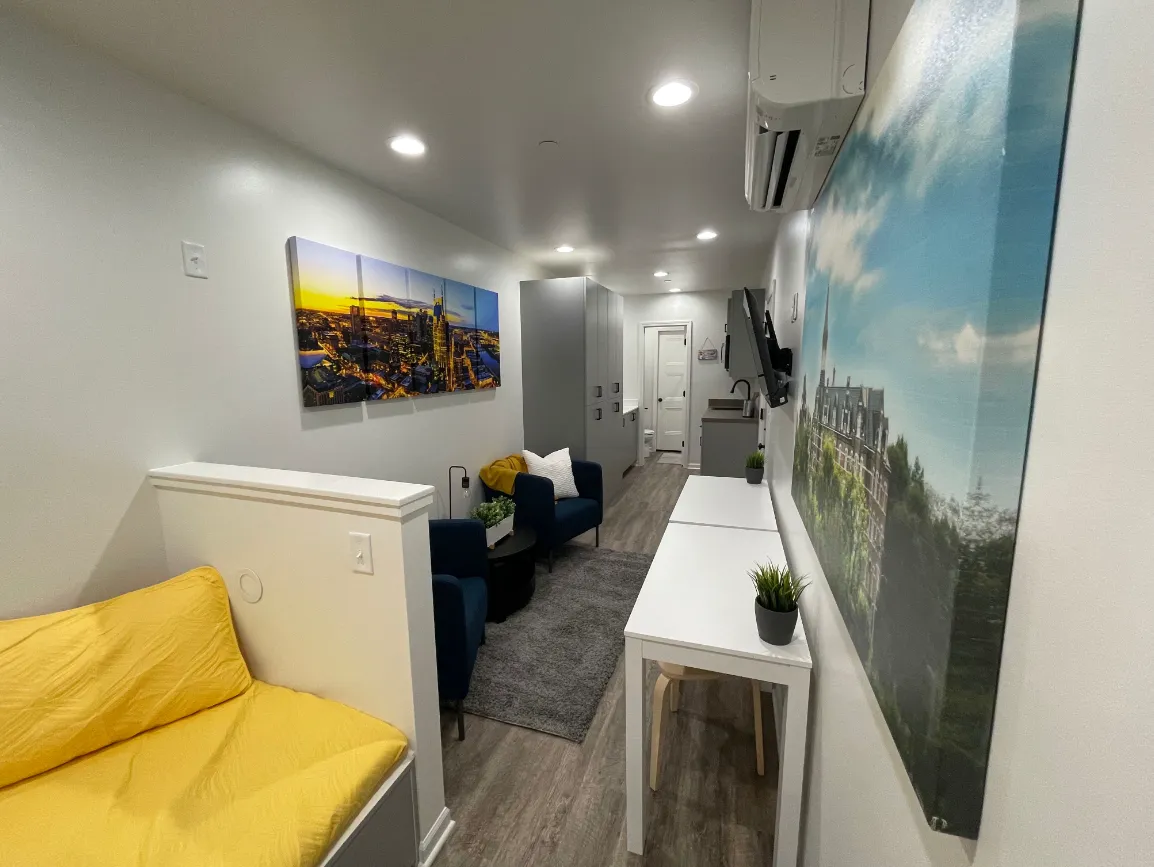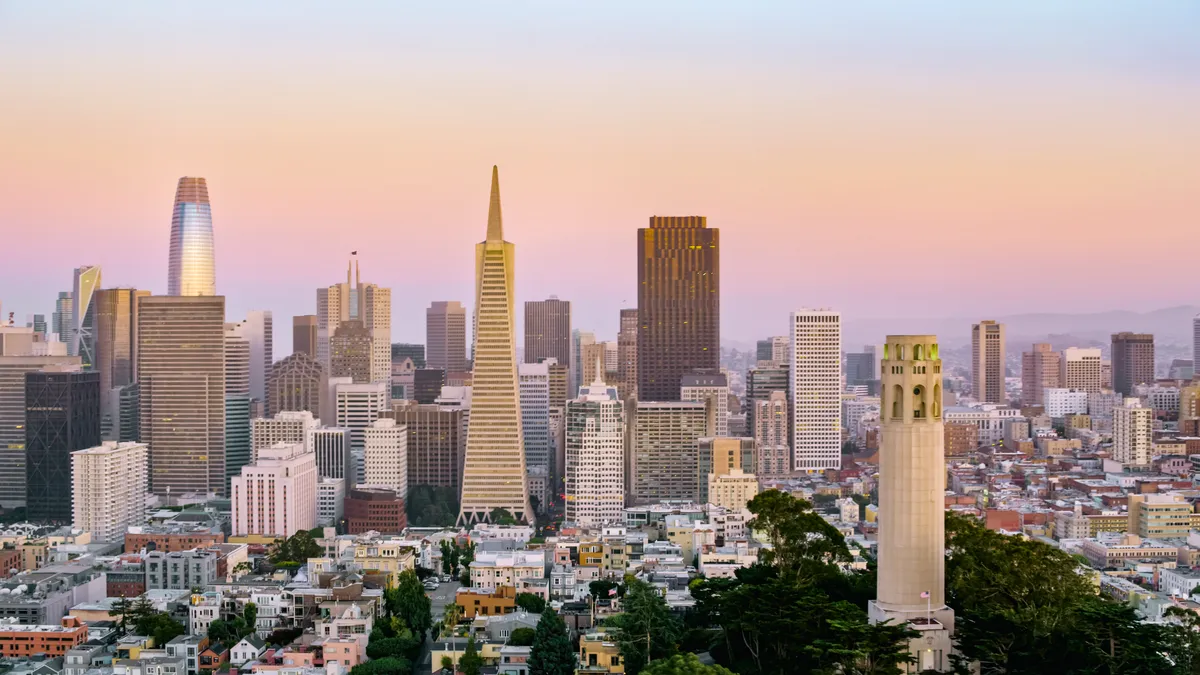Dive Brief:
- Fisk University in Nashville, Tennessee, opened a new 98-bed student housing complex composed of repurposed shipping containers earlier this month. The $4 million project was developed in partnership with Nashville-based The Bradley Projects.
- The new dorms were created to accommodate the historically black liberal arts college’s rising enrollment. The student body has grown by almost 70% in the past five years to over 1,000 students, according to Jens Frederiksen, Fisk executive vice president.
- The container units, which opened for new student move-ins on Aug. 5, make up the university’s fifth residence hall. Fisk is also building a new dormitory building, set to be ready for move-ins next fall. The shipping containers are meant to provide a more rapid solution to the university’s housing needs, Frederiksen told Multifamily Dive.
Dive Insight:
The 40-foot-long containers are arranged in blocks of four, stacked two units high and two units wide, with wooden staircases leading up to the second-floor dormitories. The exteriors are solid blue and gold, matching the school’s colors.
Inside, the units feature wood-like flooring, stainless steel appliances, recessed lighting and contemporary-style finishes, according to a unit tour posted on the university’s X, formerly known as Twitter, social media platform. “Once you walk into one,” Frederiksen said, “you forget that you’re in a shipping container.”
The facility was built by Archie, Missouri-based Custom Container Living and assembled by Nashville-based Certified Construction Services.
While the units were meant as a stopgap measure, student feedback on the new dormitories, both on the design at the development stage and from residents just moving in, has been overwhelmingly positive, according to Frederiksen.
“[We’re] dealing with a generation that is intrigued by innovation, sustainability and thoughtfulness about fixing problems along the way,” he said. And… [the units] look amazing.”

Even after the next new residence hall is completed, Frederiksen anticipates that the shipping container units will remain in use on campus.
“I think it may end up being more permanent than people anticipated,” Frederiksen said. “If the current trend continues, we have some aging infrastructure on the residential side that we also have to tackle, whether it's a matter of breaking down and rebuilding or some major deferred maintenance. The containers will give us that flexibility in the foreseeable future.”
New deliveries
The use of shipping container dormitories is relatively unique — two residence halls at the College of Idaho in Caldwell, Idaho, built in 2019, were the first U.S. projects of this kind. However, other types of housing developers have made use of both new and used shipping containers for the past several years. They are seen as a cost-effective, environmentally friendly alternative to new construction.

Many shipping container home projects in the U.S. are constructed for people experiencing homelessness, often in tandem with municipal governments. Examples include the Hilda L. Solis Care First Village in Los Angeles, built over a six month period in 2021 on a site owned by Los Angeles County’s Department of Public Works. The project, designed by Seattle-based NAC Architecture, is composed of shipping containers repurposed as 232 housing units.
Other affordable shipping container home projects include a five-story project in San Diego’s El Cerrito neighborhood, built by the Family Health Centers of San Diego, and the Signal Hill Studios in Kansas City, Missouri, built by Kansas City-based SBF Containers.
Correction: This story has been updated to include information about the developer and contractor.











